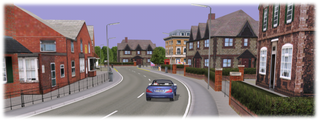SOAP is a messaging protocol specification for exchanging structured information in the implementation of web services in computer networks. It uses XML Information Set for its message format, and relies on application layer protocols, most often Hypertext Transfer Protocol (HTTP), although some legacy systems communicate over Simple Mail Transfer Protocol (SMTP), for message negotiation and transmission.

Extensible Markup Language (XML) is a markup language and file format for storing, transmitting, and reconstructing arbitrary data. It defines a set of rules for encoding documents in a format that is both human-readable and machine-readable. The World Wide Web Consortium's XML 1.0 Specification of 1998 and several other related specifications—all of them free open standards—define XML.
A web service (WS) is either:
The Organization for the Advancement of Structured Information Standards is a nonprofit consortium that works on the development, convergence, and adoption of projects - both open standards and open source - for Computer security, blockchain, Internet of things (IoT), emergency management, cloud computing, legal data exchange, energy, content technologies, and other areas.
MARC is a standard set of digital formats for the machine-readable description of items catalogued by libraries, such as books, DVDs, and digital resources. Computerized library catalogs and library management software need to structure their catalog records as per an industry-wide standard, which is MARC, so that bibliographic information can be shared freely between computers. The structure of bibliographic records almost universally follows the MARC standard. Other standards work in conjunction with MARC, for example, Anglo-American Cataloguing Rules (AACR)/Resource Description and Access (RDA) provide guidelines on formulating bibliographic data into the MARC record structure, while the International Standard Bibliographic Description (ISBD) provides guidelines for displaying MARC records in a standard, human-readable form.

The Blocks Extensible Exchange Protocol (BEEP) is a framework for creating network application protocols. BEEP includes building blocks like framing, pipelining, multiplexing, reporting and authentication for connection and message-oriented peer-to-peer (P2P) protocols with support of asynchronous full-duplex communication.
AUTOSAR is a global development partnership founded in 2003 by automotive manufacturers, suppliers and other companies from the electronics, semiconductor and software industries. Its purpose is to develop and establish an open and standardized software architecture for automotive electronic control units (ECUs).
Lauterbach GmbH is a German firm specializing in Debuggers, Trace Modules and logic analyzers used for debugging, profiling and analyzing embedded systems. The company was founded in 1979 by Lothar Lauterbach. In 2009 the firm was renamed from Lauterbach Datentechnik GmbH to Lauterbach GmbH.
The XML Bookmark Exchange Language (XBEL), is an open XML standard for sharing Internet URIs, also known as bookmarks.
Web syndication technologies were preceded by metadata standards such as the Meta Content Framework (MCF) and the Resource Description Framework (RDF), as well as by 'push' specifications such as Channel Definition Format (CDF). Early web syndication standards included Information and Content Exchange (ICE) and RSS. More recent specifications include Atom and GData.
Data exchange is the process of taking data structured under a source schema and transforming it into a target schema, so that the target data is an accurate representation of the source data. Data exchange allows data to be shared between different computer programs.
EAST-ADL is an Architecture Description Language (ADL) for automotive embedded systems, developed in several European research projects. It is designed to complement AUTOSAR with descriptions at higher level of abstractions. Aspects covered by EAST-ADL include vehicle features, functions, requirements, variability, software components, hardware components and communication. Currently, it is maintained by the EAST-ADL Association in cooperation with the European FP7 MAENAD project.
Association for Standardization of Automation and Measuring Systems or ASAM is an incorporated association under German law. Its members are primarily international car manufacturers, suppliers and engineering service providers from the automotive industry. The association coordinates the development of technical standards, which are developed by working groups composed of experts from its member companies. ASAM pursues the vision that the tools of a development process chain can be freely interconnected and allow a seamless exchange of data. The standards define protocols, data models, file formats and application programming interfaces (APIs) for the use in the development and testing of automotive electronic control units. A large amount of popular tools in the areas of simulation, measurement, calibration and test automation are compliant to ASAM standards. Compliance shall guarantee interoperability of tools from different vendors, allow data exchange without the need for converters, and facilitate the exchange of unambiguous specification between customers and suppliers.

ASAM OpenDRIVE is an open format specification to describe a road network's logic. Its objective is to standardize the logical road description between different driving simulators.

CANape is a software tool from Vector Informatik. This development software, widely used by OEMs and ECU suppliers of automotive industries is used to calibrate algorithms in ECUs at runtime.
CANoe is a development and testing software tool from Vector Informatik GmbH. The software is primarily used by automotive manufacturers and electronic control unit (ECU) suppliers for development, analysis, simulation, testing, diagnostics and start-up of ECU networks and individual ECUs. Its widespread use and large number of supported vehicle bus systems makes it especially well suited for ECU development in conventional vehicles, as well as hybrid vehicles and electric vehicles. The simulation and testing facilities in CANoe are performed with CAPL, a programming language.
ETAS GmbH is a German company which designs tools for the development of embedded systems for the automotive industry and other sectors of the embedded industry. ETAS is 100% owned by Robert Bosch GmbH.



